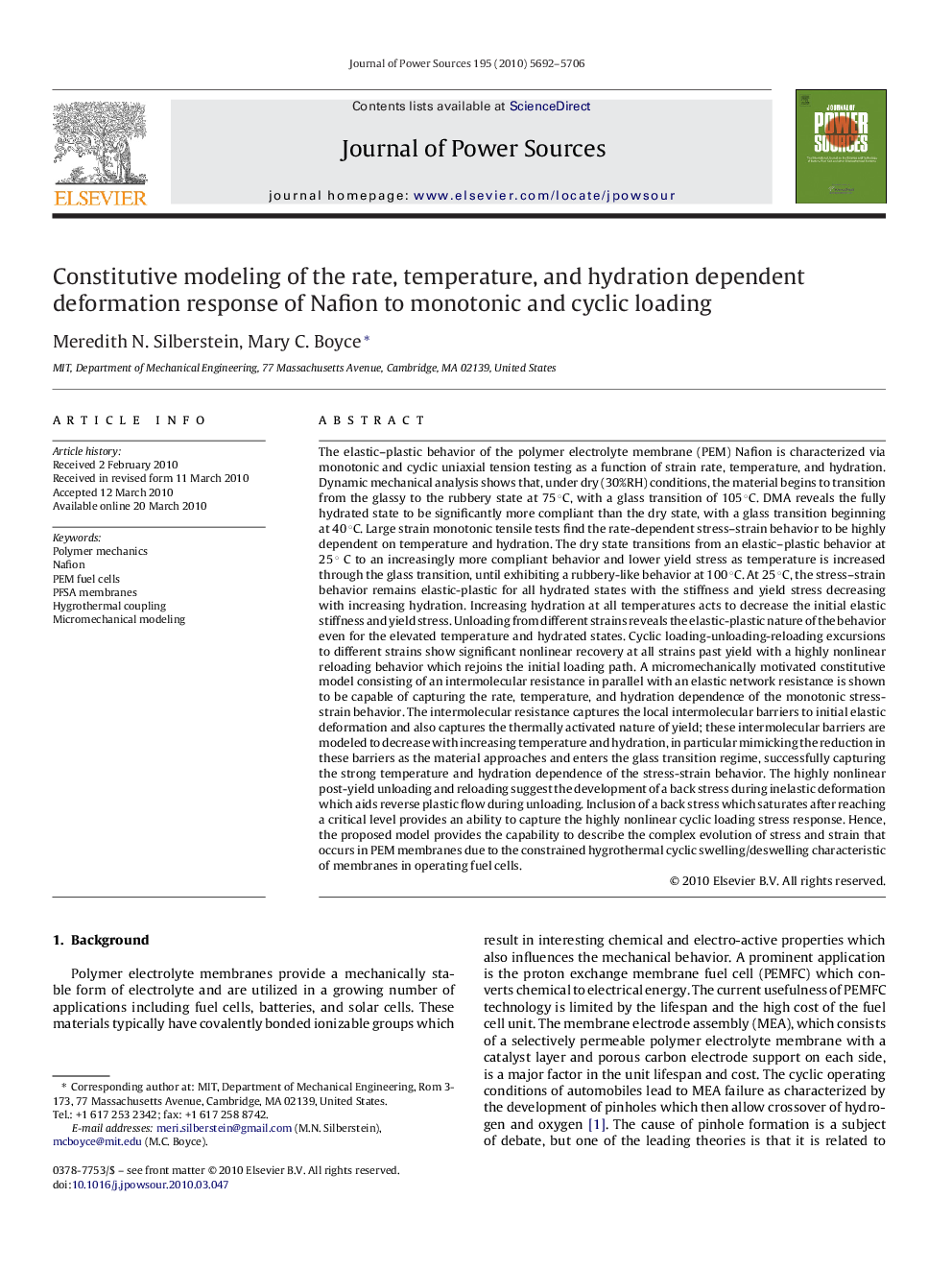| Article ID | Journal | Published Year | Pages | File Type |
|---|---|---|---|---|
| 1293736 | Journal of Power Sources | 2010 | 15 Pages |
The elastic–plastic behavior of the polymer electrolyte membrane (PEM) Nafion is characterized via monotonic and cyclic uniaxial tension testing as a function of strain rate, temperature, and hydration. Dynamic mechanical analysis shows that, under dry (30%RH) conditions, the material begins to transition from the glassy to the rubbery state at 75 °°C, with a glass transition of 105 °°C. DMA reveals the fully hydrated state to be significantly more compliant than the dry state, with a glass transition beginning at 40 °°C. Large strain monotonic tensile tests find the rate-dependent stress–strain behavior to be highly dependent on temperature and hydration. The dry state transitions from an elastic–plastic behavior at 25 °° C to an increasingly more compliant behavior and lower yield stress as temperature is increased through the glass transition, until exhibiting a rubbery-like behavior at 100 °°C. At 25 °°C, the stress–strain behavior remains elastic-plastic for all hydrated states with the stiffness and yield stress decreasing with increasing hydration. Increasing hydration at all temperatures acts to decrease the initial elastic stiffness and yield stress. Unloading from different strains reveals the elastic-plastic nature of the behavior even for the elevated temperature and hydrated states. Cyclic loading-unloading-reloading excursions to different strains show significant nonlinear recovery at all strains past yield with a highly nonlinear reloading behavior which rejoins the initial loading path. A micromechanically motivated constitutive model consisting of an intermolecular resistance in parallel with an elastic network resistance is shown to be capable of capturing the rate, temperature, and hydration dependence of the monotonic stress-strain behavior. The intermolecular resistance captures the local intermolecular barriers to initial elastic deformation and also captures the thermally activated nature of yield; these intermolecular barriers are modeled to decrease with increasing temperature and hydration, in particular mimicking the reduction in these barriers as the material approaches and enters the glass transition regime, successfully capturing the strong temperature and hydration dependence of the stress-strain behavior. The highly nonlinear post-yield unloading and reloading suggest the development of a back stress during inelastic deformation which aids reverse plastic flow during unloading. Inclusion of a back stress which saturates after reaching a critical level provides an ability to capture the highly nonlinear cyclic loading stress response. Hence, the proposed model provides the capability to describe the complex evolution of stress and strain that occurs in PEM membranes due to the constrained hygrothermal cyclic swelling/deswelling characteristic of membranes in operating fuel cells.
